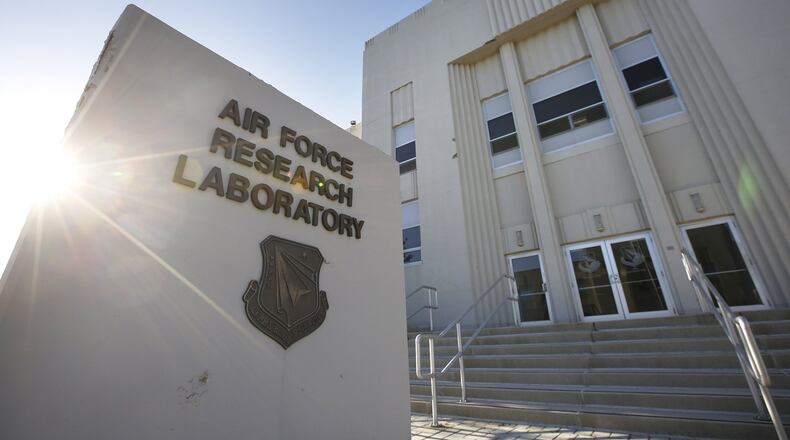“It is exciting to see this breakthrough,” said Maurice McDonald, executive vice president for aerospace and defense for the Dayton Development Coalition. “There’s no one else doing this around the country to the level we’re planning here in Ohio. We’re hoping to open doors and opportunities for ourselves, for business growth, for the academic community to participate. We’re hoping this is going to spur significant growth in a short period of time.”
RELATED: Springfield businesses see new drone rules as good for growth
The majority of the funding will be spent to procure and install a ground-based sense-and-avoid system at the airport, allowing operators to provide safe separation between drones and other aircraft in the airspace.
“If a crop duster pops up, you can tell the UAV to go in a different direction so there’s no collision,” said Art Huber, deputy director of operations at the AFRL.
The technology will tie into the airport’s air traffic control network, then take radar data and display that along with information collected by the drone. The Ohio/Indiana UAS Test Center in Springfield will operate the equipment.
“In reality, although this is an important first step, it will quickly not become the focus,” Huber said. “The focus will then be on the technologies that people will bring into UAS that they want to test using this capability.”
The test center will eventually work with commercial firms and academic institutions to schedule time in the airspace and use the equipment.
READ MORE: New Springfield commander to prep base for new drone mission
The FAA so far hasn’t allowed drones to fly out of sight because of concerns about crashes. The new system will allow operators at the airport to build a picture that includes other air traffic to prevent collisions.
The project could draw more businesses to the airport and Clark County, said Tom Franzen, assistant city manager and economic development director for Springfield.
“We made a commitment to pursue this industry,” Franzen said.
Several years ago, the Dayton Development Coalition and Ohio conducted the Ohio Airspace Strategic Integration Study, which focused on finding airspace in the state that could allow for drone testing. The study showed a ground-based sense and avoid system could help both the AFRL and Ohio achieve that goal, McDonald said.
“Being able to fly beyond line of sight is a capability right now that you cannot do anywhere in the country unless you have some type of restricted airspace,” he said said. “We will be the first in the country to develop this capability in Ohio.”
Once the system is in place, the AFRL can use the airspace to train drone pilots, and eventually test new technologies ranging from autopilot and sensor systems to new concepts like swarming, in which multiple UAVs cooperate to achieve a common mission.
The Air Force researchers now often have to travel to various spots around the U.S. to find the needed airspace and range capabilities, Huber said. In Springfield, they can conduct the same research in less than an hour’s drive.
The laboratory already has a Certificate of Authorization from the FAA to fly unmanned vehicles within line of sight, Huber said.
It hopes to install the new system by the end of this year and will begin collecting data to show the system works. That information will then be presented to the FAA, along with a request for permission to operate beyond line of sight. If granted, the AFRL could begin flying beyond line of sight by spring.
The Air Force will then help state officials attain similar permission from the FAA to conduct testing beyond line of sight.
“They might be another six to 12 months to follow in our footsteps,” Huber said.
In-depth coverage
The Springfield News-Sun provides unmatched coverage of the impact of the drone industry in Clark and Champaign counties, including stories digging into the privacy issues and possible job growth.
By the numbers:
$5 million — Total investment
$2.5 million — Amount each contributed by Ohio and the Air Force Research Laboratories
2017 — Year AFRL expects to begin test flights
About the Author
